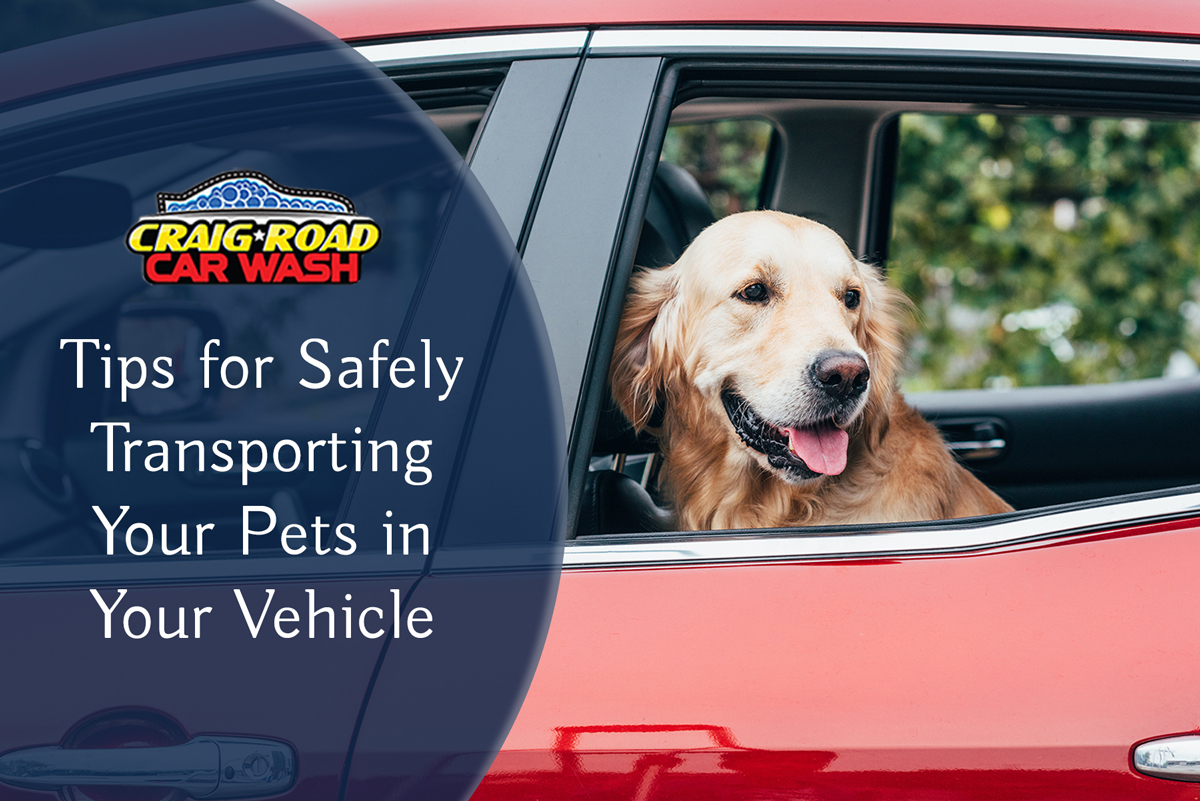Transporting pets in your vehicle can be a challenging yet rewarding experience. Whether it’s a trip to the vet, a vacation, or just a drive around town, ensuring your pet’s safety and comfort is paramount. Here are some essential tips to help you and your furry friend have a smooth and enjoyable journey.
1. Prepare Your Pet
Before the journey, make sure your pet is ready for the ride. This includes:
Familiarization: Let your pet explore the car while it’s stationary. Allow them to sniff around and get used to the environment.
Short Trips: Start with short trips to help your pet get accustomed to being in the car. Gradually increase the duration as they become more comfortable.
Exercise: Take your pet for a walk or engage them in playtime before the trip. This helps to burn off excess energy and can make them more relaxed during the ride.
2. Secure Your Pet
Keeping your pet secure is necessary for their safety and yours. Unrestrained pets can be a distraction and can cause accidents. Consider the following options:
Pet Carriers: Use a sturdy, well-ventilated carrier that is large enough for your pet to stand, turn around, and lie down comfortably. Secure the carrier with a seatbelt to prevent it from moving.
Harnesses and Seat Belts: For dogs, consider using a pet seat belt harness that attaches to the car’s seat belt system. This keeps them secure while allowing some movement.
Pet Barriers: For larger dogs, a pet barrier can be installed between the back seat and the front seats, keeping them in the back while preventing them from distracting the driver.
3. Comfort and Well-Being
Ensure your pet’s comfort and well-being throughout the journey:
Climate Control: Keep the car well-ventilated and maintain a comfortable temperature. Avoid leaving your pet in a parked car, as temperatures can rise quickly, leading to heatstroke.
Hydration and Food: Bring water and a bowl for hydration breaks, especially on long trips. Feed your pet a light meal a few hours before the trip to avoid motion sickness. Avoid feeding them during the ride.
Comfort Items: Bring along your pet’s favorite blanket, toy, or bed to provide comfort and familiarity.
4. Take Breaks
For long trips, regular breaks are essential for your pet’s comfort and health:
Rest Stops: Plan for rest stops every two to three hours. Let your pet stretch, relieve themselves, and have some water.
Leash Safety: Always use a leash when taking your pet out of the car. This prevents them from running off in an unfamiliar area.
5. Safety Precautions
Keep your pet safe with these additional precautions:
Avoid Front Seats: Never let your pet ride in the front seat. Airbags can cause serious injury to pets in the event of an accident.
Windows: Keep windows closed or just slightly open to prevent your pet from sticking their head out. Debris and strong winds can cause injury.
ID Tags: Ensure your pet has a collar with an ID tag for added security in case they get lost.
6. Know the Laws
Different regions have specific laws regarding pet transportation. Familiarize yourself with these laws to ensure you are in compliance and to avoid fines or penalties.
7. Professional Car Cleaning Afterwards
After transporting your pet, especially on long trips, your car may need some cleaning to get rid of pet hair, odors, and any potential messes:
Vacuum Thoroughly: Use a vacuum cleaner with an upholstery attachment to remove pet hair from seats, carpets, and any crevices.
Clean Surfaces: Wipe down surfaces with pet-safe cleaning products to remove any dirt, saliva, or other residues left behind by your pet.
Odor Elimination: Use pet-safe odor neutralizers to freshen up the car. Baking soda sprinkled on seats and carpets before vacuuming can also help absorb odors.
Professional Detailing: Consider taking your car to a professional detailing service that offers pet-specific cleaning packages. They have specialized tools and products to thoroughly clean and deodorize your vehicle, ensuring it’s spotless and fresh.
Transporting your pet can be a pleasant experience with the right preparation and safety measures. By following these tips, you can ensure that your pet stays safe, comfortable, and happy during your journeys together. Safe travels!



